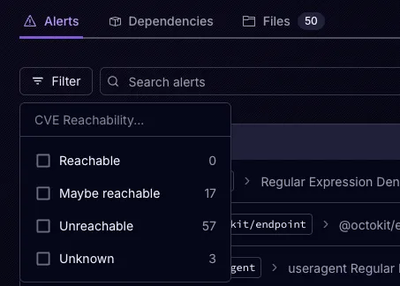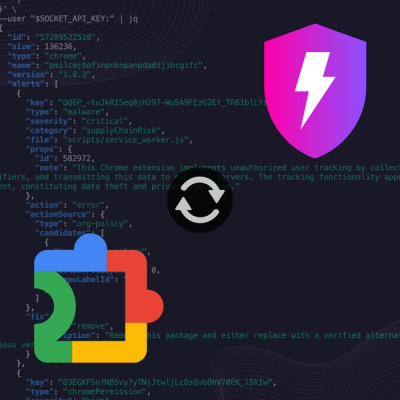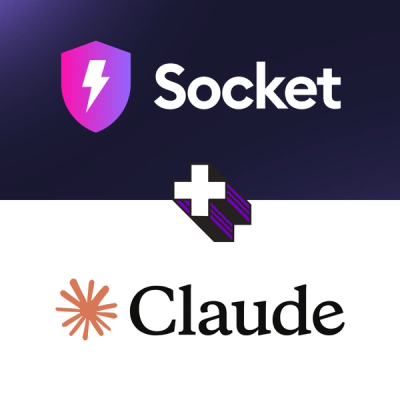
Product
Announcing Precomputed Reachability Analysis in Socket
Socket’s precomputed reachability slashes false positives by flagging up to 80% of vulnerabilities as irrelevant, with no setup and instant results.
google-api-wrapper
Advanced tools
Simple Wrapper around Google Sheets & Drive APIs
npm install google-api-wrapper
This will add googleapis as dependency.
const Google = require('google-api-wrapper');
async function main() {
Google.loadCredFile('/path/to/credentails.json');
Google.loadTokenFile('/path/to/token.json');
const Sheet = Google.getSheet();
const rows = await Sheet.read('1nZqgw5otHxvg7by-qnYmjkyNdHAPQYgduv7Tbf5aKlw');
console.log(rows);
}
main();
If you already have auth object
Googe.setAuth(authObject);
Or, set credential file followed by token
Google.loadCredFile('/path/to/credentails.json');
Google.loadTokenFile('/path/to/token.json');
Or, set them directly from json objects
Google.setCred(cred);
Google.setToken(token);
Or, exchange token provided from OAuth
Google.setCred(cred);
let token = await Google.exchangeCode(code);
Or, set refresh token
Google.setCred(cred);
Google.setRefreshToken(refresh_token);
Sheet object maintains an internal sheetId and range.
const Sheet = Google.getSheet();
await Sheet.read(id, range = 'Sheet1');
It two-dimensional array of rows and column values of sheet data. Alternatively, you can set id and range separately.
Sheet.set(id, range)
await Sheet.read();
To assume first column as header and read documents:
await Sheet.readDocs(id, range = 'Sheet1');
await Sheet.readDocs(sheet_name, range, { byName: false, slugify: true });
Returns an array of objects by using first row as field names. "slugify" will convert field names to snake case (eg: "Min. Qty" to "min_qty")
const Sheet = Google.getSheet();
Sheet.set(id, range); // range defaults to 'Sheet1', if not provided
await Sheet.clear(); // clears the range / sheet tab
await Sheet.write(row1);
await Sheet.write(row2);
await Sheet.endWrite();
Batches up multiple rows and then appends at once at interval of 500 rows, or when endWrite() is called. You must make a final call to endWrite to
const Sheet = Google.getSheet();
await Sheet.create(name);
await Sheet.write([ 'hello', 'there' ]);
await Sheet.create(name, folderId);
const Drive = Google.getDrive();
const file = Drive.byId(fileId);
It returns a file object with { id, name, mimeType } attributes.
Drive.byName(name, type = null, folderId = null);
Example:
const Drive = Google.getDrive();
let file;
file = Drive.byName('My Document');
file = Drive.byName('example.csv', 'type/csv', parentFolderId);
file = Drive.byName('Example', null, parentFolderId);
It returns a file object with { id, name, mimeType } attributes.
Drive.list(folderId);
Example: to list all files under a folder named "My Folder"
const Drive = Google.getDrive();
const folder = Drive.byName('My Folder');
const files = Drive.list(folder.id);
It returns an array of file objects with { id, name, mimeType } attributes.
const Drive = Google.getDrive();
await Drive.readFile(id);
Returns string of file content.
const Drive = Google.getDrive();
await Drive.copy(fileId, newName);
const Drive = Google.getDrive();
await Drive.move(fileId, folderId);
const Drive = Google.getDrive();
const file = await Drive.create(name, mimeType, body, parentFolderId);
const file = await Drive.create(name, 'folder');
See mime-type mappings below for simplified mime type inputs.
To create a sub-folder under another parent folder, provide null body and parent folder id.
const file = await Drive.create(subFolderName, 'folder', null, parentFolderId);
Quick mimetype mappings:
| Input Mime Type | Translated Mime Type |
|---|---|
| 'folder' | 'application/vnd.google-apps.folder' |
| 'doc' | 'application/vnd.google-apps.document' |
| 'document' | 'application/vnd.google-apps.document' |
| 'sheet' | 'application/vnd.google-apps.spreadsheet' |
| 'spreadsheet' | 'application/vnd.google-apps.spreadsheet' |
Drive object holds reference to Google API's drive object as a property 'drive', which you can use to call the methods of Google Drive API.
For example, to list comments on a document named 'My Document', follow below
const Google = require('google-api-wrapper');
const Drive = Google.getDrive();
const file = Drive.byName('My Document');
// Below is call to underlying Google Drive API's method directly
const comments = Drive.drive.comments.list({ fileId: file.id });
Similarly, Google Sheet object is stored as 'sheet' property of wrapper's sheet object. methods on Sheet.sheet can be made as per Google Sheet API.
const Google = require('google-api-wrapper');
const Sheet = Google.getSheet();
// Calls underlying Google Sheet API
Sheet.sheet.spreadsheets.batchGet(options);
To test the package,
# .env file
CRED_PATH=/path/to/credentials.json
TOKEN_PATH=/path/to/token.json
npm testFAQs
Google API Wrapper
The npm package google-api-wrapper receives a total of 8 weekly downloads. As such, google-api-wrapper popularity was classified as not popular.
We found that google-api-wrapper demonstrated a not healthy version release cadence and project activity because the last version was released a year ago. It has 1 open source maintainer collaborating on the project.
Did you know?

Socket for GitHub automatically highlights issues in each pull request and monitors the health of all your open source dependencies. Discover the contents of your packages and block harmful activity before you install or update your dependencies.

Product
Socket’s precomputed reachability slashes false positives by flagging up to 80% of vulnerabilities as irrelevant, with no setup and instant results.

Product
Socket is launching experimental protection for Chrome extensions, scanning for malware and risky permissions to prevent silent supply chain attacks.

Product
Add secure dependency scanning to Claude Desktop with Socket MCP, a one-click extension that keeps your coding conversations safe from malicious packages.